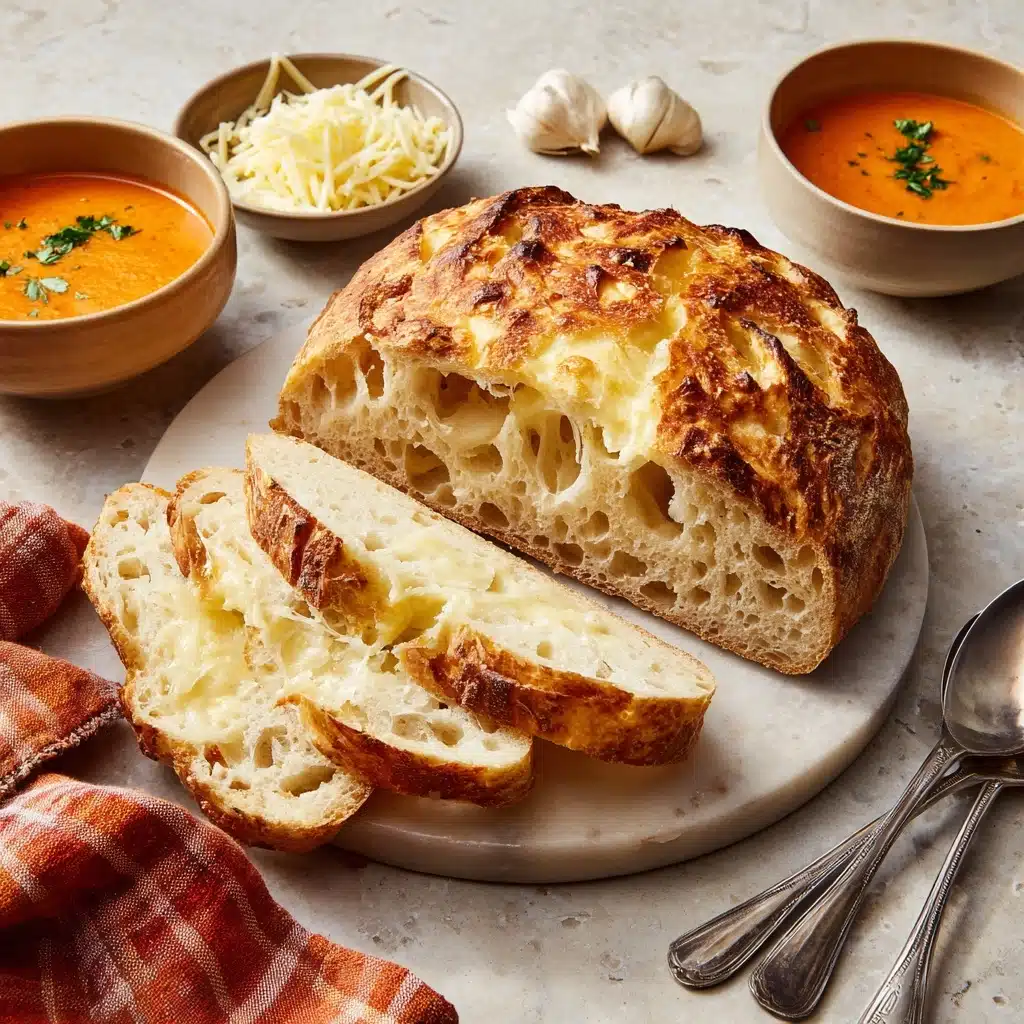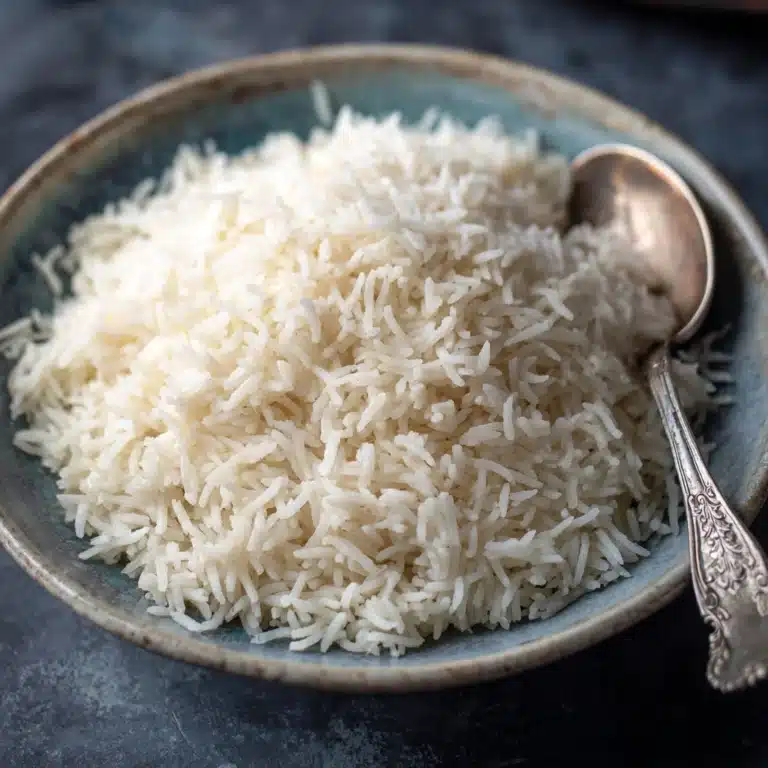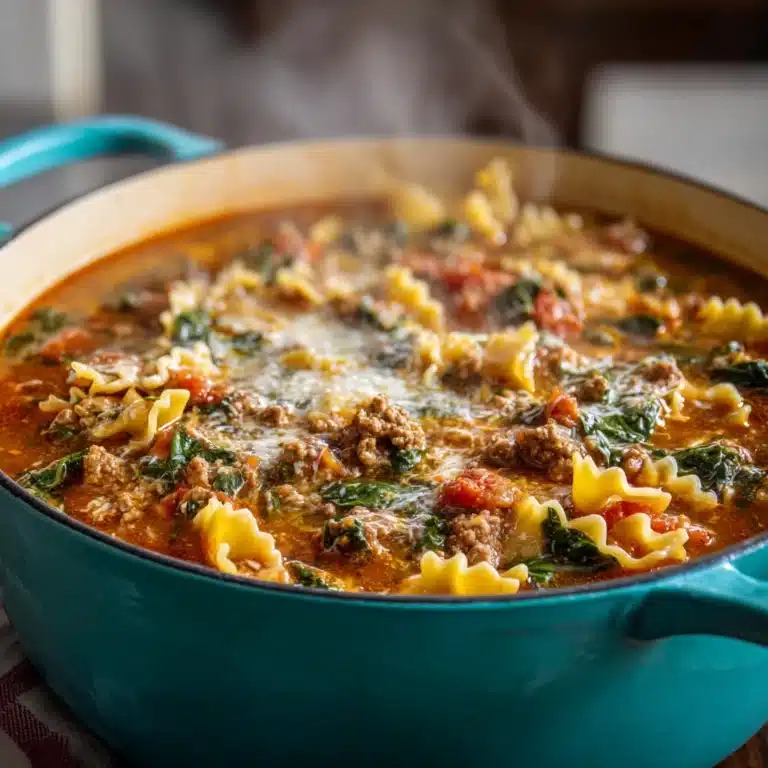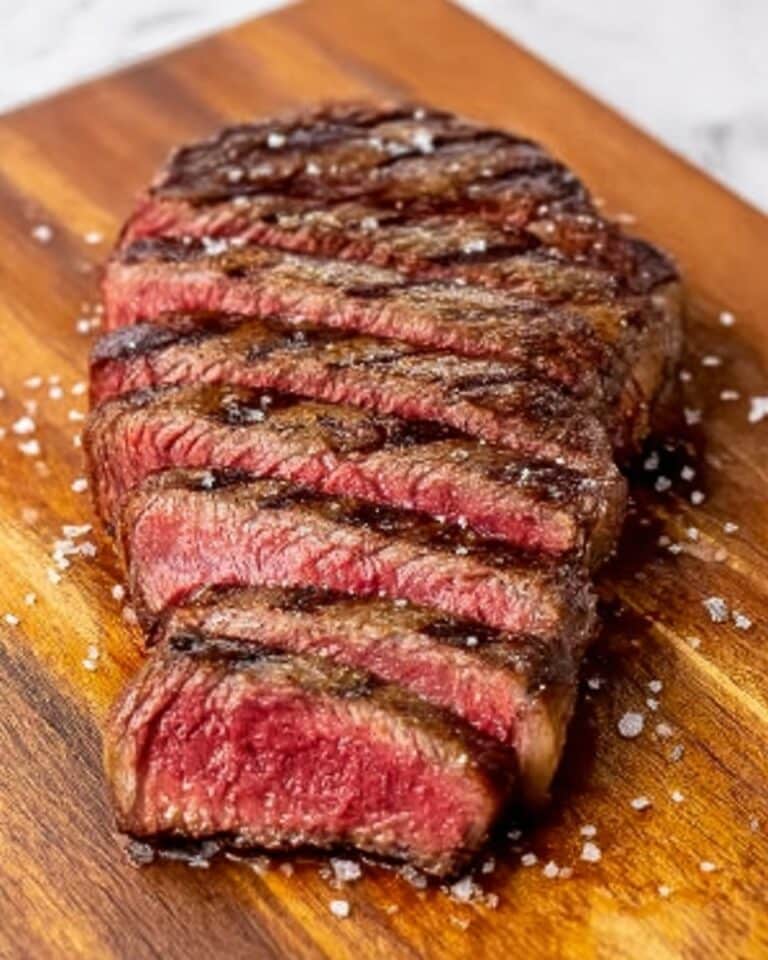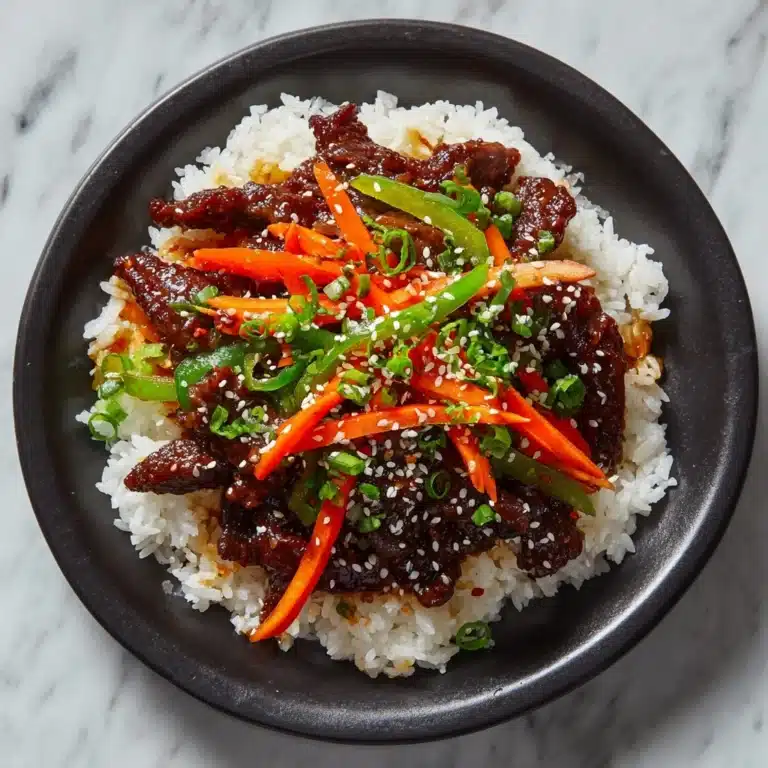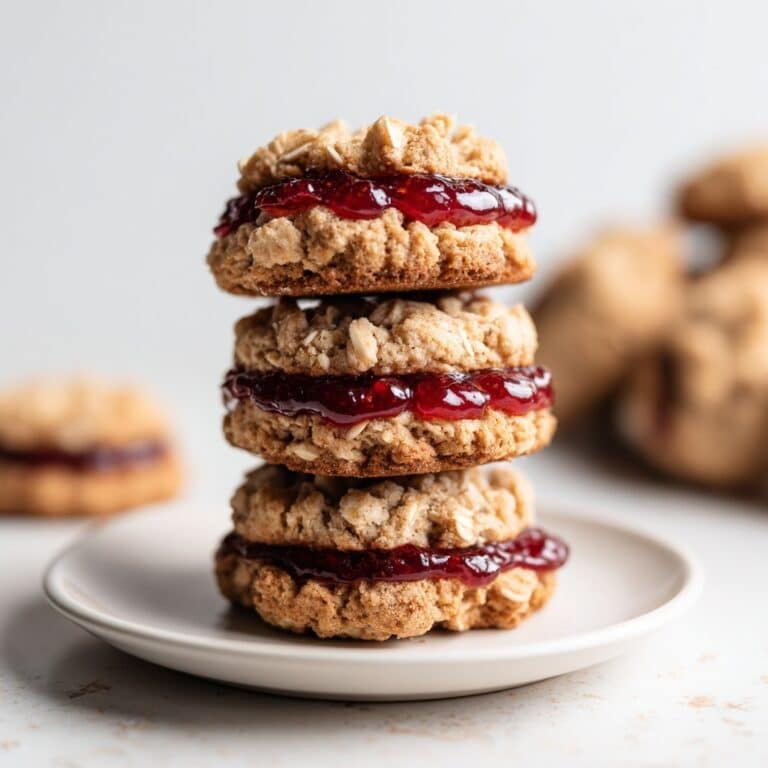There’s something irresistible about a homemade loaf of warm, crusty bread—especially when you hardly have to do any work to get there! Asiago-Crusted Skillet Bread (No Knead) is that back-pocket recipe you’ll want to make again and again: outrageously golden, rustic, cheesy, and hands-down one of the easiest ways to get bakery-style bread right from your own oven. Just a handful of kitchen staples (plus a shower of Asiago cheese) magically transform into a skillet loaf with the richest flavor, rustic chew, and a cheesy crust that’s nothing short of show-stopping.
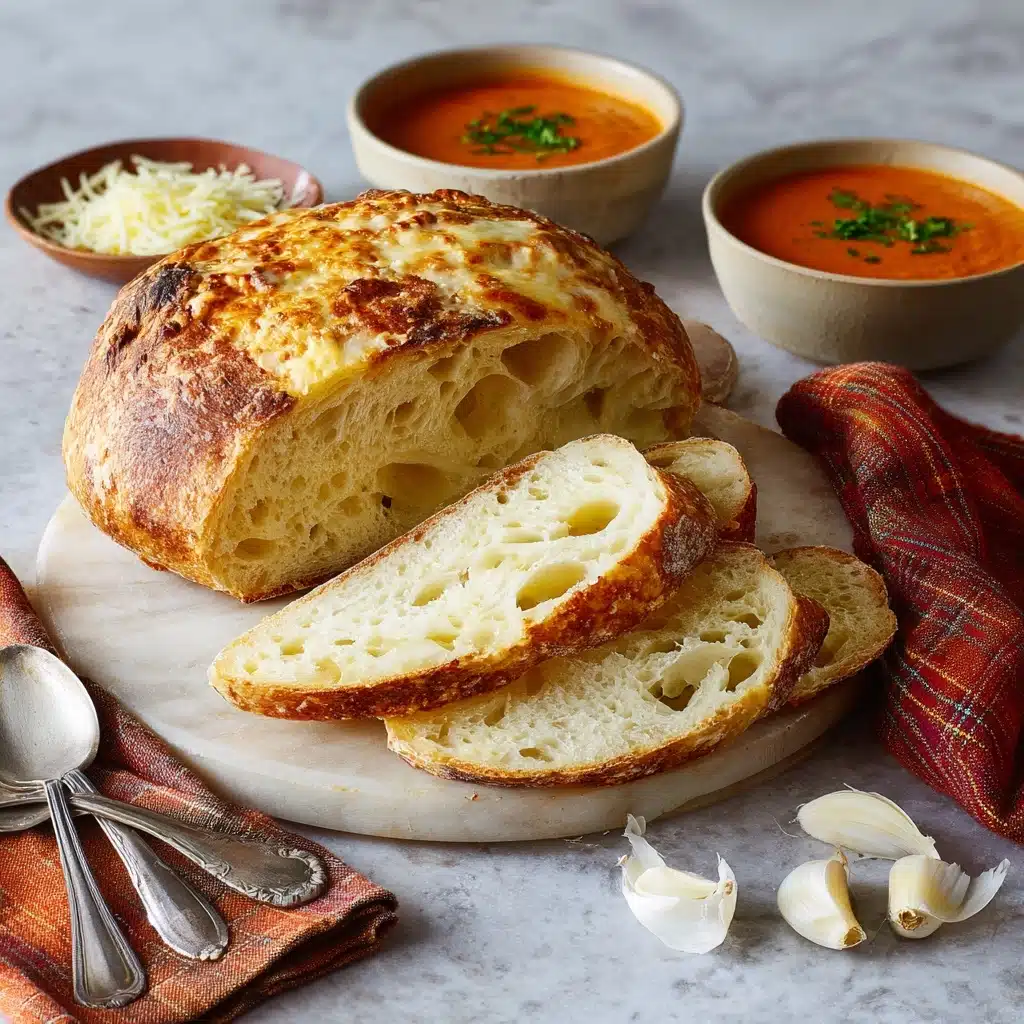
Ingredients You’ll Need
You might be surprised by just how short and simple this ingredient list is, but don’t let that fool you—every component plays an essential part in the perfect Asiago-Crusted Skillet Bread (No Knead). Each has its moment to shine, from the flour’s structure to the cheese’s tangy zip.
- All-purpose flour: The sturdy base that gives the bread its soft, sliceable crumb and inviting chew.
- Salt: Don’t skip this! It wakes up all the other flavors and brings balance to the loaf.
- Instant yeast: Just a pinch is enough for a gorgeous overnight rise; no need to proof.
- Warm water (about 110°F): The secret to activating the yeast and creating that dreamy, sticky dough texture.
- Olive oil: Keeps the crumb moist and adds a subtle richness to every bite—plus you’ll need a little extra to keep things from sticking.
- Shredded Asiago cheese: The hero of this recipe! Salty, savory, and sharp with a melt-in-your-mouth finish (and don’t hold back—extra cheese means extra crust).
- Cornmeal or flour for dusting: For a golden, crunch-enhanced bottom and easy release from the parchment or skillet.
How to Make Asiago-Crusted Skillet Bread (No Knead)
Step 1: Mix Your Dough
Grab a big mixing bowl and whisk together the flour, salt, and instant yeast. With a wooden spoon or sturdy spatula, mix in the warm water and olive oil until combined; the dough will look scrappy, sticky, and a little shaggy. That’s exactly what you want—no kneading, no fuss!
Step 2: Let It Rest and Rise
Cover the bowl tightly with plastic wrap and walk away. Leave your dough at room temperature for 12 to 18 hours, overnight is perfect, until it’s doubled in size and looks bubbly and jiggly on the surface. This slow rise is where the alchemy happens, developing depth and airy texture.
Step 3: Prep the Skillet and Preheat
When you’re ready to bake, preheat your oven to 450°F (232°C), and pop your 10-inch cast iron skillet right inside to heat up. This step ensures that the crust will be beautifully crisp and golden, just like bakery loaves.
Step 4: Shape and Cheese-Crust Your Dough
On a well-floured surface, gently turn out your dough and, with floured hands, coax it into a loose ball. Sprinkle a generous handful of shredded Asiago onto a sheet of parchment, then gently roll and press the dough over the cheese so it sticks to the surface—this crust is the star! Brush away any excess flour.
Step 5: Bake to Golden Perfection
Carefully take your hot skillet out of the oven and drizzle in a bit of olive oil for extra crunch and insurance against sticking. Lay your dough, cheese-side down, right into the skillet, and top with more Asiago for maximum flavor. Bake for 30–35 minutes, until the bread is a deep golden brown and the cheesy crust is bubbling and crisp.
Step 6: Cool, Slice, and Savor
After baking, let your Asiago-Crusted Skillet Bread (No Knead) cool in the skillet for about 10 minutes to set the crumb and make slicing easier. Then, lift it out, slice thick wedges, and prepare to wow your tastebuds with every bite.
How to Serve Asiago-Crusted Skillet Bread (No Knead)
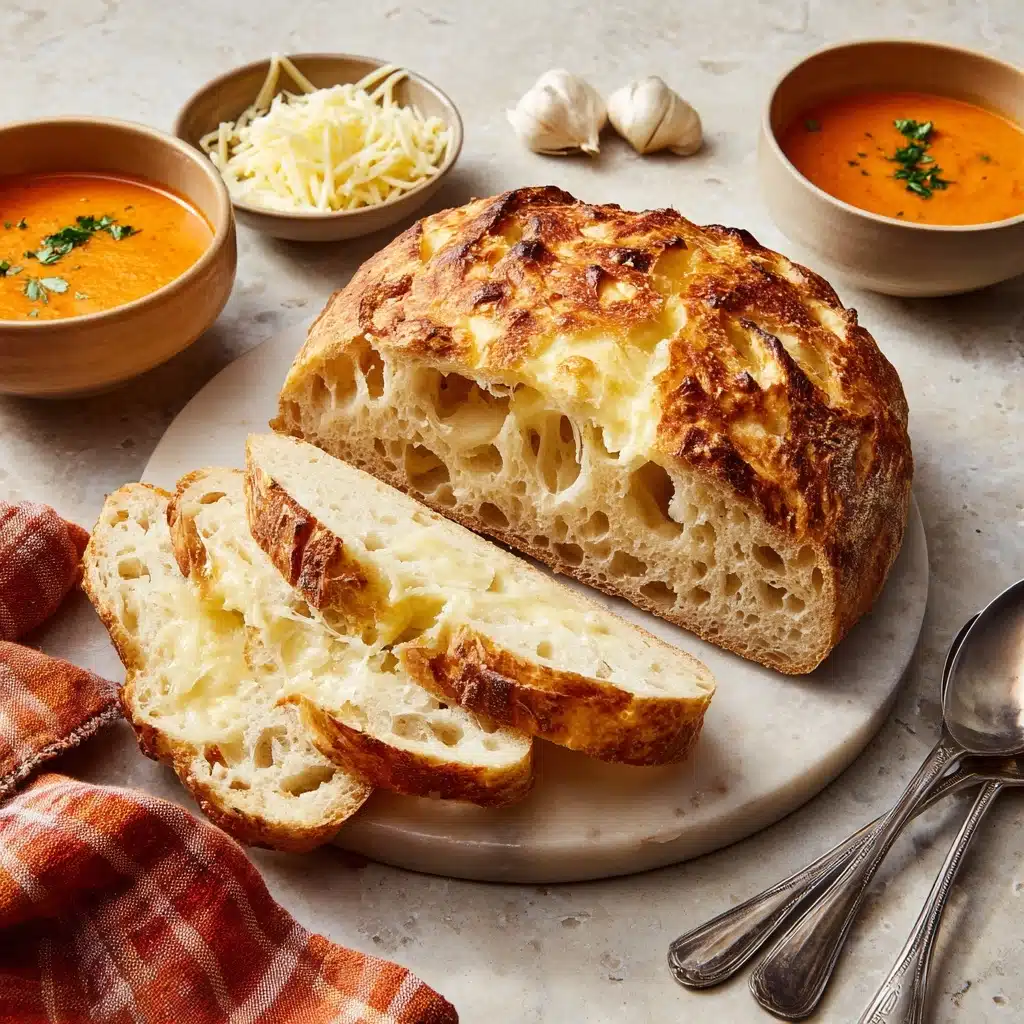
Garnishes
Just a touch can go a long way! A sprinkle of chopped fresh herbs like rosemary, thyme, or chives right out of the oven adds aroma, color, and a little fresh lift to every slice of your Asiago-Crusted Skillet Bread (No Knead). If you want to gild the lily, brush the warm crust with a little melted butter or a drizzle of good olive oil before garnishing.
Side Dishes
This bread truly shines alongside a rustic soup, a bright salad, or even served as the centerpiece for a cheese-and-olive board. It’s magic with tomato basil soup, hearty stews, or nestled next to a plate of antipasto—basically, wherever you’d love warm, cheesy bread, this is it!
Creative Ways to Present
To really impress, slice your loaf thickly and serve open-faced with extra cheese, sliced tomatoes and basil, or roasted garlic cloves. Or, tear it into hunks and serve on a big wooden board as a centerpiece for casual gatherings—the dramatic crust and golden color make it a showstopper. For an elegant twist, use it as the base for savory bread pudding or gourmet grilled cheese sandwiches.
Make Ahead and Storage
Storing Leftovers
Leftover Asiago-Crusted Skillet Bread (No Knead) keeps beautifully when wrapped tightly in foil or stored in a bread bag at room temperature for up to 2 days. If your kitchen is on the warmer side or you plan to keep it longer, pop it in the fridge for up to 5 days—just know the crust will soften a touch.
Freezing
This bread freezes like a dream! Slice the cooled loaf, wrap slices or halves snugly in plastic wrap and aluminum foil, and stash in a zip-top freezer bag. They stay fresh for up to 2 months—thaw on the counter or overnight in the fridge before reheating to revive that irresistible crust.
Reheating
To bring back the fresh-baked magic, reheat slices or the whole loaf in a 350°F oven for 10-12 minutes until warmed through and the crust crisps up. A toaster oven also works for individual slices. For extra decadence, brush with a little olive oil or dot with butter before reheating.
FAQs
Can I substitute the Asiago cheese?
Absolutely! While Asiago gives the bread its signature nuttiness and sharp flavor, you can swap in Parmesan, Pecorino Romano, or even finely shredded Gruyère for a delicious twist. Each cheese brings its own personality and melts beautifully onto the crust.
Do I really need a cast iron skillet?
A cast iron skillet is best for a crisp, rustic crust, but if you don’t have one, a heavy oven-safe Dutch oven or a sturdy baking dish works too. Just make sure to preheat the vessel so your bread gets that lovely bottom crust.
How long should I let the dough rise?
Go for at least 12 hours, but up to 18 is great if your kitchen is cool. This slow fermentation builds the bread’s chewy texture and deep, complex flavor—overnight is both easy and ideal!
Why is my dough so sticky?
No knead doughs are usually sticky—that’s what creates the open crumb and chewy bite. Just dust your hands and surface well with flour when shaping, and don’t worry if it looks loose. It will bake up beautifully!
Can I double this recipe?
Yes! Double the ingredients and split between two skillets (or bake in a larger Dutch oven). The baking time may increase slightly, so keep an eye out for that deep golden hue and the delicious cheesy aroma as a sign it’s ready.
Final Thoughts
Once you try this Asiago-Crusted Skillet Bread (No Knead), it’s destined to win a permanent place in your baking rotation. It’s so fuss-free and full of flavor, you’ll want to share it with everyone you know. So grab your skillet, your cheese, and get ready to savor the kind of homemade bread that turns any meal into an occasion!
Print
Asiago-Crusted Skillet Bread (No Knead) Recipe
- Total Time: 13 hours
- Yield: 1 loaf (8 slices) 1x
- Diet: Vegetarian
Description
Enjoy a crusty, savory Asiago-crusted skillet bread without the hassle of kneading. This no-knead recipe yields a golden brown loaf with a cheesy exterior that’s perfect for sharing or snacking.
Ingredients
Dough:
- 3 cups all-purpose flour
- 1 and 1/2 teaspoons salt
- 1/2 teaspoon instant yeast
- 1 and 1/2 cups warm water (about 110°F)
- 1 tablespoon olive oil
Additional:
- 1/2 cup shredded Asiago cheese
- Extra Asiago for crusting
- Cornmeal or flour for dusting
Instructions
- Mix the Dough: Combine flour, salt, and yeast. Add water and oil, stir into a sticky dough. Cover and let rest for 12-18 hours.
- Prep for Baking: Preheat oven with a cast iron skillet inside. Shape dough, roll in Asiago, then place in hot skillet.
- Bake: Sprinkle more Asiago on top. Bake until golden and crusty, about 30-35 minutes.
- Cool and Serve: Let the bread cool for 10 minutes before slicing.
Notes
- No kneading required—just mix and rest overnight.
- Substitute Parmesan or Gruyère for Asiago.
- Store leftovers in a bread bag or wrap, reheat in the oven to refresh.
- Prep Time: 10 minutes (plus overnight rest)
- Cook Time: 35 minutes
- Category: Bread
- Method: Baking
- Cuisine: American
Nutrition
- Serving Size: 1 slice
- Calories: 190
- Sugar: 0.2 g
- Sodium: 320 mg
- Fat: 4 g
- Saturated Fat: 2 g
- Unsaturated Fat: 1.5 g
- Trans Fat: 0 g
- Carbohydrates: 32 g
- Fiber: 1 g
- Protein: 6 g
- Cholesterol: 5 mg
